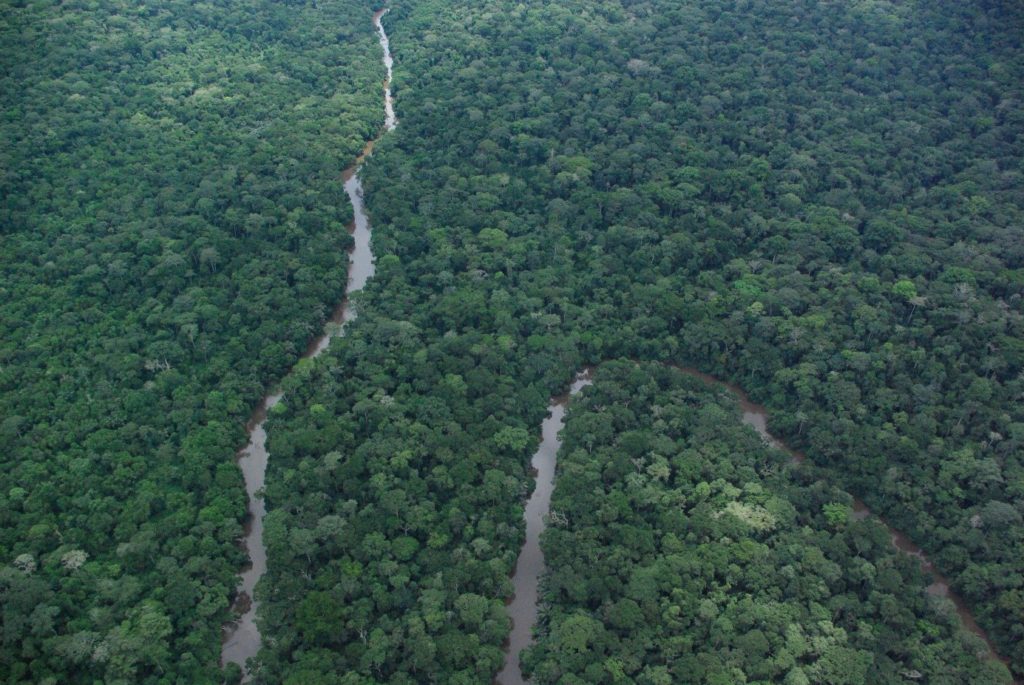On April 3rd, an article entitled « The carbon sink of tropical forests is rapidly weakening » was published on the ATIBT website, relaying Hubau W’s Nature article. & al » Asynchrononous carbon sink saturation in African and Amazonian tropical forest » and CIRAD and Gembloux University publications on the subject.
In addition to this article, FRMi wishes to present here its analysis of the lessons to be learned from the publication of Nature.
We would like
to focus on the role of forests in the fight against climate change.
- First of all, we should recall
the crucial role of forests in mitigating climate change. Natural forests are
considered as a « carbon sink »: since their emergence and thanks to
the growth of trees, they sequester CO2, i.e. they absorb carbon from the
atmosphere and fix it in the wood. As long as the tree is alive, this carbon
remains sequestered. When the tree dies (e.g. during a deforestation event),
the carbon is released into the atmosphere. Natural forests therefore store
carbon above all in a « static » way by « capitalisation »
since the appearance of the forest, with carbon that remains subtracted from
the atmosphere as long as the forest is preserved. Thus, a climatic forest,
well adapted to environmental conditions, can be in equilibrium, keeping a
constant carbon stock. In some cases, additional carbon storage is added each
year: in a dynamic phase, tree growth in the forest is higher than natural
mortality, and forests continue to subtract carbon from the atmosphere each
year. The « static » storage
provided by forests is essential: by destroying one hectare of natural forest,
several hundred tons of CO2 are emitted into the atmosphere. It is therefore
essential to preserve existing natural forests by managing them sustainably.
This role is known and is not questioned in the article published in Nature.
The article by Hubau et al. deals with the « dynamic role » of forests
in the sequestration of atmospheric carbon, seeking to answer the following
question: will forests continue to grow and sequester additional atmospheric
carbon in the next twenty years, and if so, at what rate and for how long?
- The paper by Hubau et al. first
confirms that the forests of Central Africa store carbon, but beyond that, that
they have captured significant additional amounts of carbon in recent decades
and that they will continue to do so until 2039. We can be pleased with this
result, which is not new, it was already obtained by other research work and it
confirms the lessons of the management work we have carried out, which show
that the forests of Central Africa are undergoing strong evolution.
- The forests of Central Africa are
therefore in a capitalisation phase, with a significant increase in the carbon
they store of 0.66 t CO2/ha/year, i.e. around 0.3%/year. Intuitively, it is
doubtful that this increase will continue indefinitely and that the carbon
stock in the forest will eventually reach a maximum.
- The publication by Hubau et al.
confirms the slowdown in absorption capacity, with a « saturation » of
the carbon stock in the long term.
- The publication by Hubau et al.
does not mention the risk of Central African forests becoming carbon emitters.
- In any case, Central African
forests store significant amounts of CO2 and will continue to do so for decades
at least if they are well managed.
Thus, Nature’s
publication further reinforces the importance of well-managed Central African
forests in the fight against climate change.
In summary,
what we learn from reading the Nature publication is that Central African
forests store significant amounts of carbon and this stock will continue to
grow, even at a slower rate, until 2039. The preservation of this stock through
good management of the forests of Central Africa is therefore more than ever a
good means of combating climate change.


